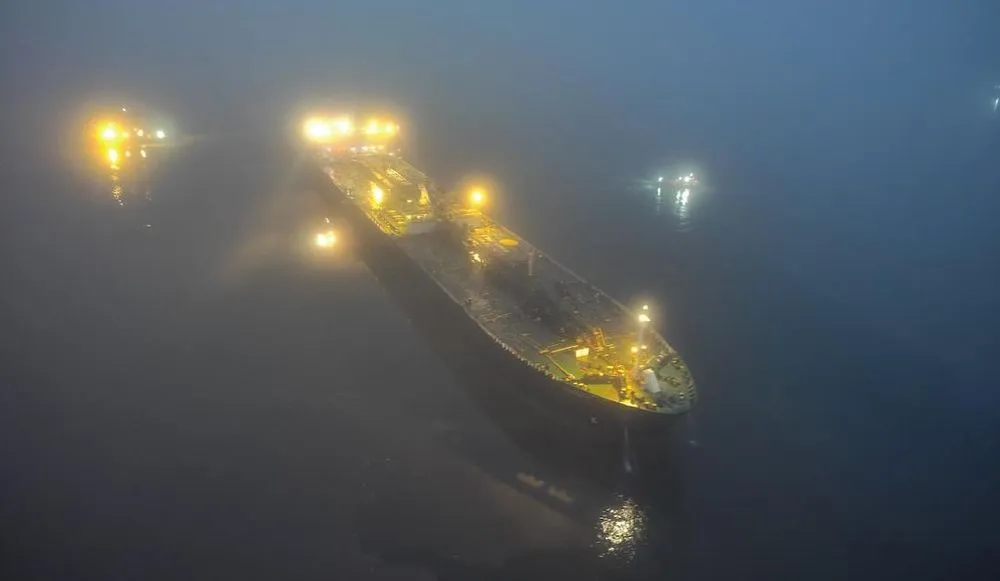Questions grow over whether Baltic Sea cable damage was sabotage or accidental
Reports citing anonymous intelligence officials have suggested Western authorities are assessing the recent spate of cable breakages in the Baltic Sea to be accidents rather than acts of sabotage, despite widespread concern to the contrary.
These assessments, which were revealed by The Washington Post and Norwegian newspaper Verdens Gang, have prompted strong criticisms from onlookers who argue that the nature of the incidents and their repeat occurrence indicate a pattern of behavior.
The most recent incident was caused by the oil tanker Eagle S, which dragged its anchor on Christmas Day for almost 100 kilometers (62 miles) along the floor of the Baltic Sea, rupturing several power and telecommunications cables.
Following the breakages, the Eagle S was boarded by Finnish authorities and has since been detained at the oil port of Kilpilahti in Porvoo, east of Helsinki, while investigators examine the ship and question the crew as part of a criminal investigation.
It followed a month after a Chinese cargo ship named Yi Peng 3 is believed to have broken the C-Lion1 cable, and a year after another Chinese ship named Newnew Polar Bear damaged a subsea gas pipeline between Finland and Estonia.
The Washington Post cited U.S. officials who said “clear explanations” had come to light in each case indicating that the damage was accidental, and that there was a lack of evidence to support allegations that Moscow had directed the ships’ actions.
A Norwegian government official told Verdens Gang there was a presumption against Russia taking actions that would risk disrupting its own smuggled oil exports, much of which are conducted through what Western countries describe as Russia’s “shadow fleet” — a collection of up to 1,000 decrepit vessels with opaque ownership structures that sail under flags of convenience.
“Russia's use of the so-called shadow fleet poses a particular threat to the maritime and environmental security in the Baltic Sea region and globally,” NATO allies declared last week at a meeting addressing “the recent increase in serious incidents damaging critical undersea infrastructure in the Baltic Sea.”
“This reprehensible practice also threatens the integrity of undersea infrastructure, increases risks connected to sea-dumped chemical munitions, and significantly supports funding of Russia's illegal war of aggression against Ukraine,” stated the allies, who also pledged “to deter, detect and counter any attempts at sabotage” without confirming that this was what had caused the cable breakages.
Keir Giles, a consulting fellow at the Chatham House think tank’s Russia and Eurasia Programme, told Recorded Future News that the assessments reported by the Washington Post and Verdens Gang were “obviously inconsistent with the facts as they’ve been established so far. These anonymous sources have directly contradicted what seafarers and maritime experts think is even conceivably possible,” he said.
In particular, maritime experts have argued that it is not feasible to accidentally drag an anchor for more than 100 kilometers. A German Navy captain’s view on the matter — shared by Giles and the German naval analyst Sarah Kirchberger on social media — notes that the anchor and chain of a ship like the Eagle S weigh over 100 metric tons.
“Dragging this weight several kilometres across the seabed requires considerable power from the engine, and it also makes a lot of noise and clatter. It’s a bit like a heavy truck dragging a trailer without wheels on the A7 from Flensburg to Hamburg [a 166km journey in Germany] and the driver then saying they didn’t even notice.”
Giles also took issue with the lack of evidence regarding Moscow issuing sabotage directions: “It’s entirely unsurprising that no concrete evidence of direct orders or intention to drag such an anchor has been found since the only such evidence likely to exist would be a self-incriminating confession by a crew member,” he said, then stressing that the absence of evidence is not the evidence of absence.
Tim Stevens, a reader in international security at the Department of War Studies at King’s College London, told Recorded Future News: “This is difficult stuff. We’re having to rely on a whole range of sources — most of which are not in the public domain — and an awful lot of people popping up declaring themselves as experts, and some anonymous intelligence officials.
“I’m always quite cautious with these things unless there is firm evidence pointing in a particular direction, and even then we have to be a bit careful,” he added. “On the balance of evidence that we’re aware of, I don’t think we can come to that conclusion [that the incidents were accidental]. I just don’t think that’s sustainable.”
But he cautioned it was “difficult to generalise and each case needs to be taken on its own merits. Obviously there seems to be a pattern of suspected behaviour here. Can we firmly attribute to Russia in all cases? No we can’t, and I suspect it’s not a particularly helpful thing to do unless we’re deliberately trying to create an environment of blame.”
Alexander Martin
is the UK Editor for Recorded Future News. He was previously a technology reporter for Sky News and is also a fellow at the European Cyber Conflict Research Initiative.



